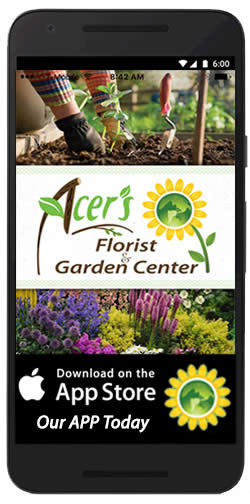
August is the beginning of the end of summer. While this will lighten your load a bit in the garden, it's a good idea to do a little basic maintenance now to prepare for the fall and keep your to-do list short as the daylight shrinks this fall.
There are still edibles you can be planting in your garden in August. Beets, carrots, peas, spinach, lettuce, turnips, and green onions can still be planted now. They all can take a light frost, but at this point, planting transplants might be your best bet to see a harvest before the cold really hits. Additionally, onions and garlic can be planted in the next few weeks for harvesting in the spring.
To prolong your harvest, it's best to check on your garden daily and pick whatever is ripe. Leaving fruit on the plant tells the plant that it doesn't need to grow anymore. If your squashes are flowering, but not producing, it might be a good idea to hand pollinate.
Pick your zucchini when it's 4-8" long and it will taste better, and the plant produce more zucchini. If birds are ruining your tomatoes, picking them when they turn orange and counter-ripening can be a good strategy. Keep an eye out for pests and take care of infestations in the early stages.
For your berries, you'll want to be pruning back spent canes. Strawberries should be weeded and mulched, and you can transplant any extra strawberry plants to a new bed for next spring now too.
In the flower garden, August is a great time to add some fall-colored annuals to your beds. Keep deadheading spent flowers and give them some fertilizer to get another show out of them. Check your roses and remove any leaves with black spot. Trim and train your vines to their trellis. It can also be useful to put in stakes near your perennials with labels, so you'll remember what you have next spring.
You should be keeping your lawn mower set to the highest setting this time of year. Now is also a good time to aerate and dethatch your lawn. Only fertilize the lawn if you've been getting plenty of rain.
With all of the scraps from all of this maintenance, this can also be a great time to get a compost pile started - if you haven't already. If you're short on space, you can just "chop and drop" dead plants and let them break down on top of the soil as mulch for now, then turn them into the soil when the season is over.
Adding organic material to your garden is really just "making a deposit" toward the nutrients your plants will need in future seasons.
Hopefully you're having a great harvest this year.
If not, this is a good time for planning out your garden for next year, while the memory's still fresh. A gardening notebook can be very handy. Record what you planted and when, your successes, failures, and lessons learned.
Having a record will help you remember where you planted things before they pop up in the spring.
Above all, take care of yourself. Doing your work in the morning or evening will help you keep your stamina and prevent heat stroke. Stay hydrated and keep your skin protected, and take a break if need be. Happy Gardening!
Click to print this article.

















